Mirrorless cameras are lightweight and easy on the shoulder, making them the low-maintenance buddies of photography gear. One perk is the absence of that clunky mirror you find in traditional cameras. Without it, the best mirrorless cameras can focus faster and capture moments in the blink of an eye. They boast an autofocus system that never misses a beat, whether you’re snapping a quick pic or chasing the perfect shot.
Unlike DSLRs with their bulky reflex mirrors, mirrorless cameras employ an electronic viewfinder (EVF) to display the scene directly from the sensor. This eliminates the mirror box, resulting in a lighter, more compact body that’s easier to carry and handle. But the benefits go beyond portability.
Benefits of Going Mirrorless:
- Unparalleled Image Quality: Mirrorless cameras boast high-resolution sensors and advanced image processing engines, delivering stunningly sharp, detailed images with exceptional low-light performance.
- Faster Focusing: Most mirrorless cameras feature phase-detect autofocus systems on the sensor, offering blazing-fast and accurate focusing, even in challenging lighting conditions.
- Live View Revolution: The EVF allows you to see the final image in real-time, adjusting settings and composing your shot with ease. No more peeking through the optical viewfinder!
- Silent Operation: Say goodbye to the DSLR’s clunky mirror slap! Mirrorless cameras operate near silently, making them ideal for capturing quiet moments or discreet street photography.
- Video Powerhouse: Many mirrorless cameras excel in video recording, offering features like high frame rates, smooth autofocus, and cinematic image profiles.
- Compact Convenience: Ditch the bulky DSLR bag! Mirrorless cameras offer a more travel-friendly experience, letting you capture stunning images without weighing yourself down.
With so many cameras available, choosing the right one can feel overwhelming. Here are some key factors to consider:
- Sensor Size: Full-frame sensors offer the best image quality, but crop sensors are smaller and more affordable.
- Resolution: Higher megapixel count means more detail, but consider file size and processing power.
- Autofocus: Prioritize fast and accurate autofocus if you shoot action or low-light photography.
- Video Features: If video is important, consider features like 4K recording, frame rates, and codecs.
- Budget: Mirrorless cameras come at various price points, so set a realistic budget before exploring options.
The best mirrorless cameras are ideal for shooting smooth, cinematic footage. Their ability to handle high-quality video with ease means you can capture the action at your friend’s wedding dance or your cat’s acrobatics like a professional. It’s a win-win for both photographers and videographers looking to lighten their load without compromising on quality. We want that for you, which is why StudyFinds has crafted this list of the best mirrorless cameras most recommended by experts. Did we miss your favorite? Leave a comment to let us know!
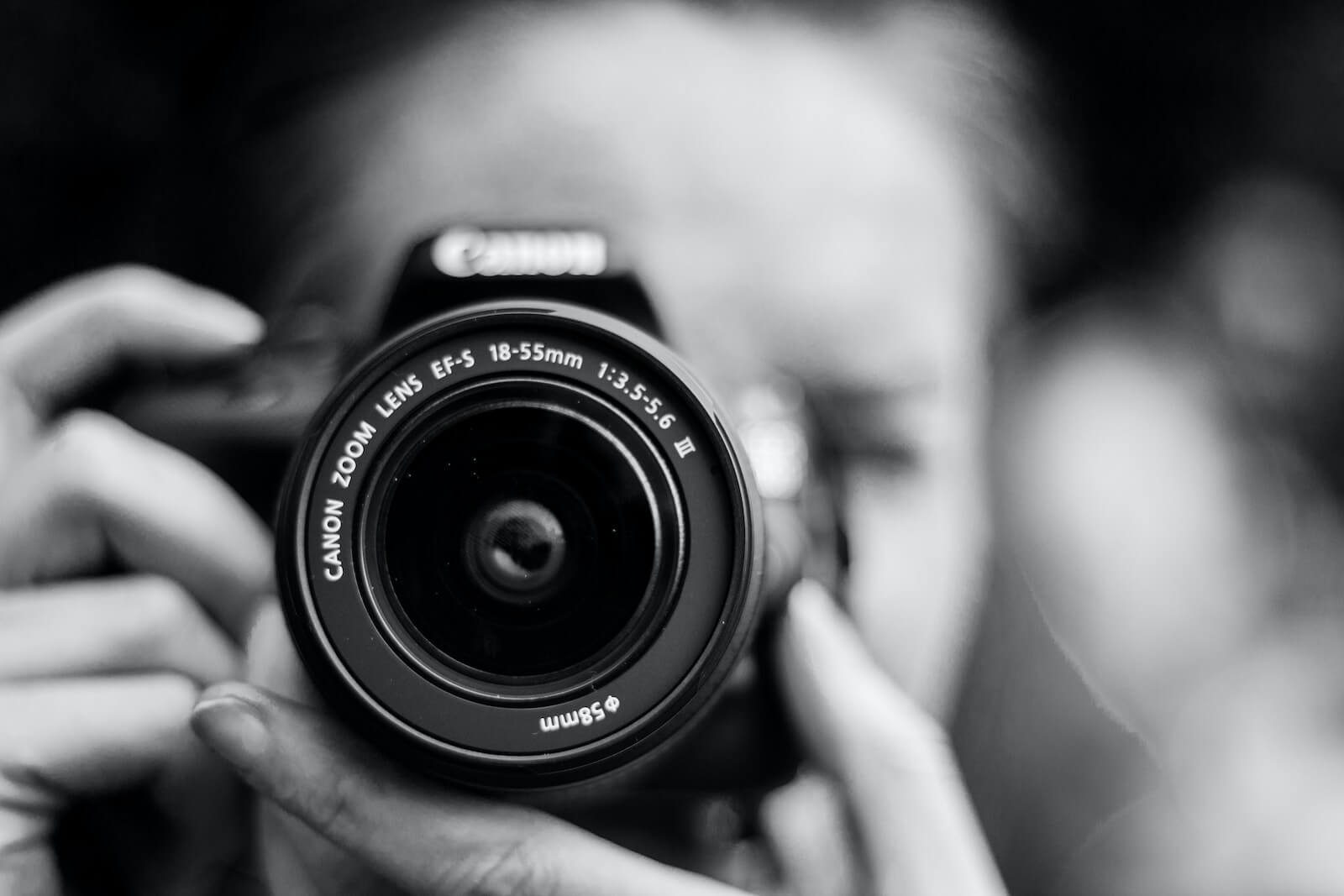
The List: Best Mirrorless Cameras, According to Tech Experts
1. Canon EOS R7
At the top of our list is an impressive model by Canon. “The Canon EOS R7 is like one of the camera giant’s full-frame EOS R cameras, only with a smaller APS-C sensor. For the price, it’s impressively powerful, particularly if you’re fan of shooting wildlife or sports scenes. That’s because it boasts 15fps burst speeds (or 30fps if you switch to the electronic shutter). Our tests found that the EOS R7 can indeed hit these speeds, though you don’t get the deep buffers found on full-frame siblings like the EOS R6, so it can’t sustain those speeds for quite as long. Beyond rattling off frames of speeding animals, the EOS R7 offers comfortable handling, Canon’s latest subject-tracking autofocus system and dual UHS-II card slots, making it a camera that will also tempt pro EOS R series fans as a second body. The only downside? Canon has so far only made two native lenses for the EOS R7’s APS-C sensor. More should be en route, though, and you can always mount existing RF lenses or adapt older EF lenses from Canon’s DSLRs while you wait,” says Tech Radar.

Mirrorless cameras are your best bet for capturing spontaneous shots effortlessly. “The EOS R7 has a 30 FPS burst, 4K 60p filming, in-body image stabilization, and a great autofocus system. It also has one of my favorite features, a pre-release burst mode that allows you to record photos up to 1/2 second before you’ve fully pressed the shutter button. This is great for unpredictable wildlife photography. One potential issue is that the buffer is not as big as that of the Fuji X-H2S. The Canon EOS R7 gives you 93 shots at 30 FPS and 187 shots at 15 FPS (assuming that you’re using lossless compressed CRAW). These figures are not low, but not best-in-class either. Even so, the EOS R7 would be one of my first choices for sports and wildlife photography on a budget today,” writes Photography Life.
Their compact design makes them ideal for on-the-go photographers and filmmakers. “The R7 is the mirrorless replacement for three of the most popular DSLRs that Canon ever made: the EOS 90D, EOS 7D and EOS 80D. However, more than just doing the same thing but without a mirror, Canon has turned these speed-focused wildlife specialists into an all-purpose performer that can handle anything you throw at it. Of course, the Canon EOS R7 still retains its pedigree when it comes to wildlife, sports and action. Its blistering 30fps maximum shooting speed is on par with the flagship Canon EOS R3, and the 1.6x crop factor means that the effective focal length of your lenses is extended. My creaky old EF 75-300mm lens becomes a whopping 120-480mm on this camera! It also boasts the same bleeding-edge autofocus system found in the flagship camera, which I called a cheat code for wildlife photography,” shares Digital Camera World.
2. Nikon Z9
Second on our list is the Nikon Z9. “The autofocus is rapid, even in low light, giving you the best opportunity to capture fleeting moments at special occasions such as weddings or sporting events. Not to mention, it’s just as capable of shooting video as it is at stills. It also has an incredibly impressive burst speed, capable of shooting up to 120FPS! Although, the trade-off here is that 30, 60 and 120FPS are JPEG only, with RAW images topping out at 20FPS (which is still really good!),” says Space.
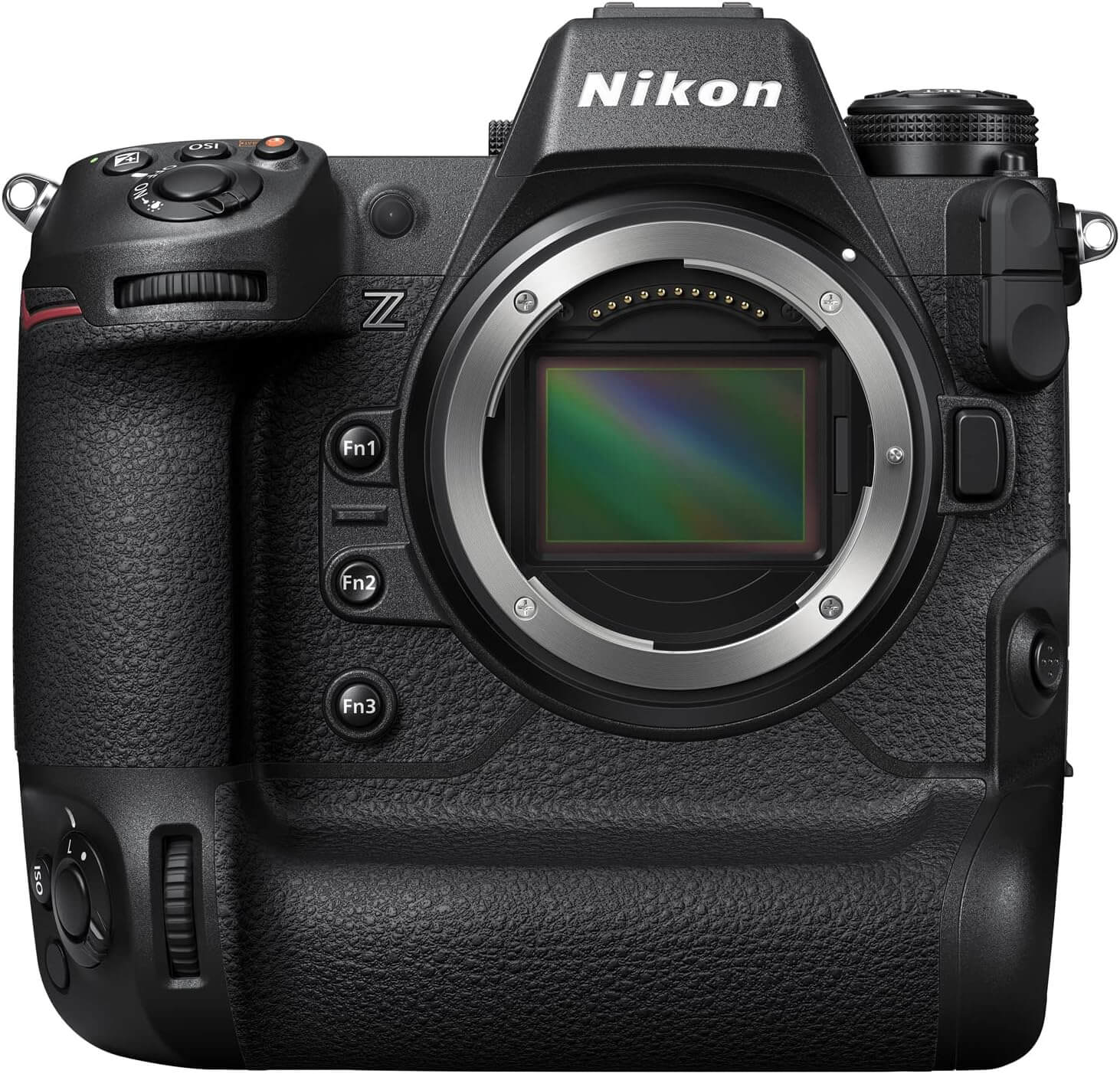
You would think that it would cost less when there’s a part missing, but it doesn’t! “The Nikon Z9 is a workhorse no matter what subject you throw at it. This camera is Nikon’s best wildlife photography camera and Nikon’s best landscape photography camera. It has a 45-megapixel sensor, yet shoots 20 FPS bursts with a practically unlimited buffer (1000+ shots),” writes Photography Life.
Professional filmmakers often choose mirrorless cameras to deliver smooth, high-quality footage. “Some say that Nikon was late to the party with its pro mirrorless camera. The moment I used it, though, I knew that Nikon hadn’t been tardy: it had been canny. This is the most top-to-bottom capable mirrorless camera on the market right now. The 8K is as good as anything I’ve experienced from the Sony or Canon, particularly its market-first 8K 60p. I was skeptical when I saw that Nikon had ditched the mechanical shutter but, with a blinding 120fps continuous shooting and a max shutter speed of 1/32,000, the Z9 simply stands in a league of its own. (Yes, admittedly those 120 frames are only 11MB JPEGs, but it’s still hugely impressive).The autofocus is a few steps behind Canon’s, and even Sony’s, but the deep learning-powered system is still truly incredible whether you’re shooting people, animals, planes, trains or automobiles. The stabilization is rock-solid, it’s as rugged as they come… the only thing I don’t like is Nikon’s counter-intuitive mounting and ring directions,” shares Digital Camera World.
3. Fujifilm X-T5
Third on our list is Fujifilm X-T5. “The X-T5 may not be an astrophotography specialist, but we think it does offer some useful tools for nighttime photography. Its interval timer can take several images at intervals of your choice, from one second to a full 24 hours, ideal for time-lapses, star trails and celestial events. Additionally, it features subject detection modes, including tracking for animals, birds, and vehicles,” says Space.
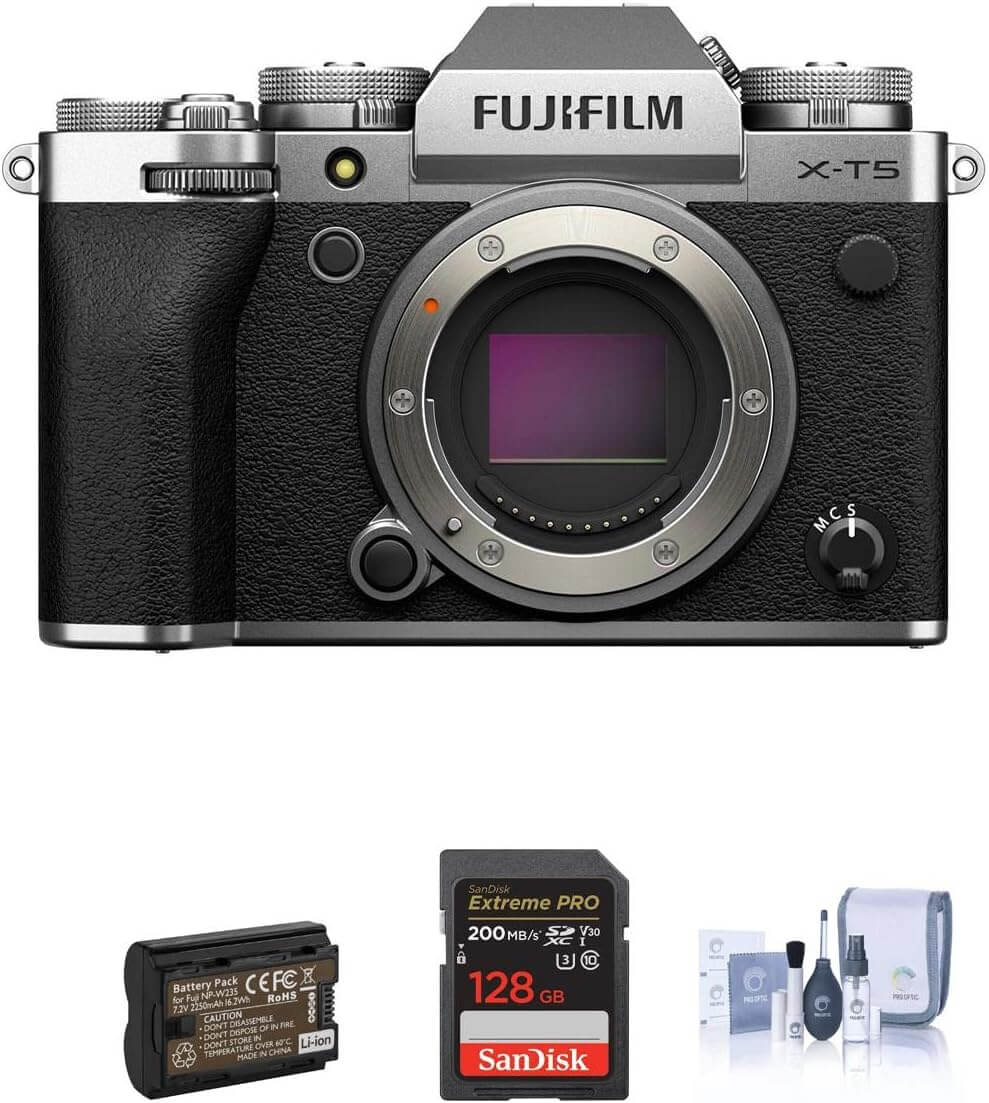
Science enthusiasts praise this brand without hesitation. “The Fujifilm X-T5 is a truly fantastic camera. In fact, one of our editors calls it one of the most enjoyable cameras he’s ever used. It offers lots of tactile controls, including an ISO dial and physical switch for shutter drive modes. These keep you from digging into menus nearly as often as other cameras. The body feels like a small SLR, including a physical dial for shutter speed, which makes the camera feel like an analog one. Fujifilm built the camera around a high-resolution 40.2-megapixel sensor that does a great job of grabbing lots of detail from a scene. It comes with Fujifilm’s excellent film simulation modes, which could save you time when it comes to throwing it up on a monitor and editing. And the autofocus is responsive and accurate. While the camera is primarily for still shooters, there are plenty of impressive features for video creators. For example, it can shoot up to 6.2K 30p video or oversampled 4K footage. And it offers plenty of video capture formats, including F-LOG2 and Apple ProRes Raw,” writes Pop Sci.
The Fujifilm isn’t for the novice photographer; you have to be dedicated to recognize it’s quality. “The Fujifilm X-T5 is the best choice to bring your photography to a higher level. The sensor puts out surprisingly clean, detailed, color-accurate images even when you shoot in especially dim lighting. And Fujifilm’s film simulations evoke nostalgic memories through clever application of color and tones, if you opt to use them The camera is rugged and weather sealed, has dedicated dials for all of your most-used settings, sports a large electronic viewfinder that gives you a great view of what you’ll get, and captures beautiful 4K video. Plus, its tilting screen and built-in image stabilization make shooting in challenging situations even more manageable than with our top pick,” shares NY Times.
4. Panasonic Lumix S5 II review
Fourth on our list of the best mirrorless cameras is Panasonic. “The Lumix S5 Mark II is arguably the best value new full-frame camera around at the time of making this review, packing a wealth of features while comfortably undercutting key rivals on price. The long-awaited inclusion of phase-detect autofocus transforms both photo and video, eliminating the distracting pulsing which haunted earlier Lumix cameras. While the core features and specs are roughly similar to its rivals, drilling-down reveals unique benefits to each: Canon’s R6 II enjoyed the best subject detection in my tests, allows uncropped 4k up to 60p, in-camera focus stacking, multiple exposures, a bulb timer, pre-capture mode, 1080 180p slow motion, and the fastest mechanical burst speed of 12fps. Sony’s A7 IV has the highest resolution on a single frame, support for a faster memory card and access to a wealth of lenses including Tamron’s which aren’t yet available for L or RF mount. Meanwhile the S5 II boasts a high-res pixel shift mode, focus bracketing with a mechanical shutter that allows flash, open-gate 6k video, waveform and vector displays, anamorphic modes, real-time LUT previews, and potentially longer recording times under hotter conditions thanks to a built-in fan,” says Camera Labs.
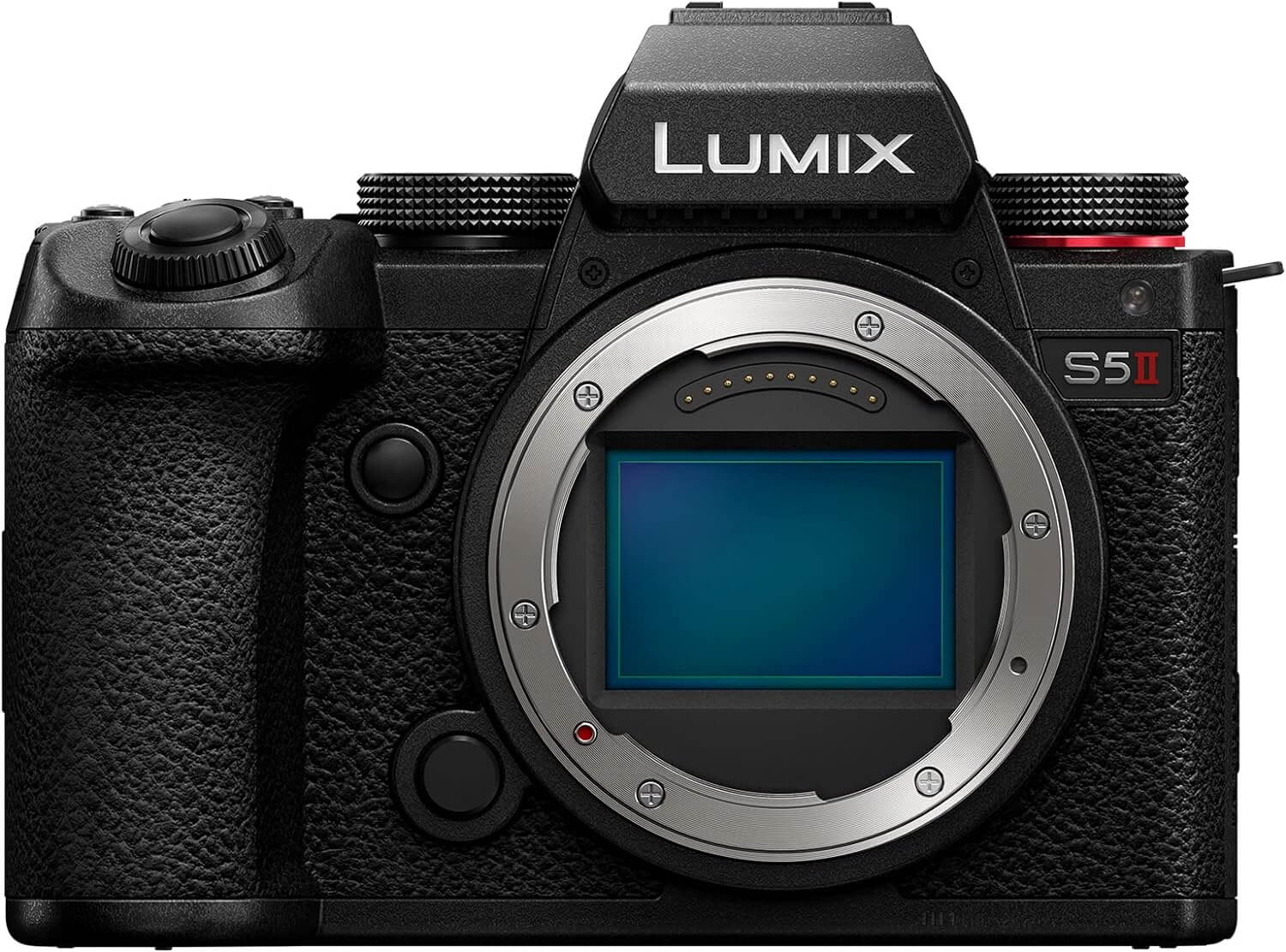
Mirrorless cameras consistently deliver exceptional results, making them the tool of choice for the pros. “One area where Panasonic had been lagging behind the best mirrorless cameras from Nikon, Canon, and Sony was autofocus performance (at least in Panasonic’s full-frame cameras). The Panasonic S5 II fixes this by introducing the company’s phase-detect AF. Although the S5 II has a 24-megapixel sensor, don’t let that fool you if you’re a landscape photographer. Like some of the Sony and Fuji cameras on this list, the Panasonic S5 II has a high-resolution pixel-shift mode that quadruples a photo’s resolution to 96 megapixels! This only works if the subject is staying still, but I found that it produces fairly natural results in previous Panasonic mirrorless cameras, like the Panasonic S1R (see our review). The Panasonic S5 II also has some very good video features, capturing up to 6K video internally,” shares Photography Life.
5. Olympus OM-D E-M10 Mark IV
Coming in at number five is Olympus. “In the realm of micro four thirds, the OM System OM-1 is an amazing camera for sports photography and wildlife photography. It also has some of the most modern features of any camera on this list. Not only does it have a stacked 20MP sensor, it has an insane 120fps burst capability and advanced subject recognition modes for almost every situation. If you don’t want to carry around a massive full-frame camera, and you want access to some very compact, yet high-quality lenses, the OM-1 is worth considering. The downside, of course, is the smaller sensor size. Obviously Micro Four Thirds has a dedicated audience of photographers, and for something like wildlife or macro photography, it’s may not be a hinderance at all. But bigger sensors allow you to shoot in low-light conditions more easily, and they give you more flexibility in your depth of field,” says Photography Life.
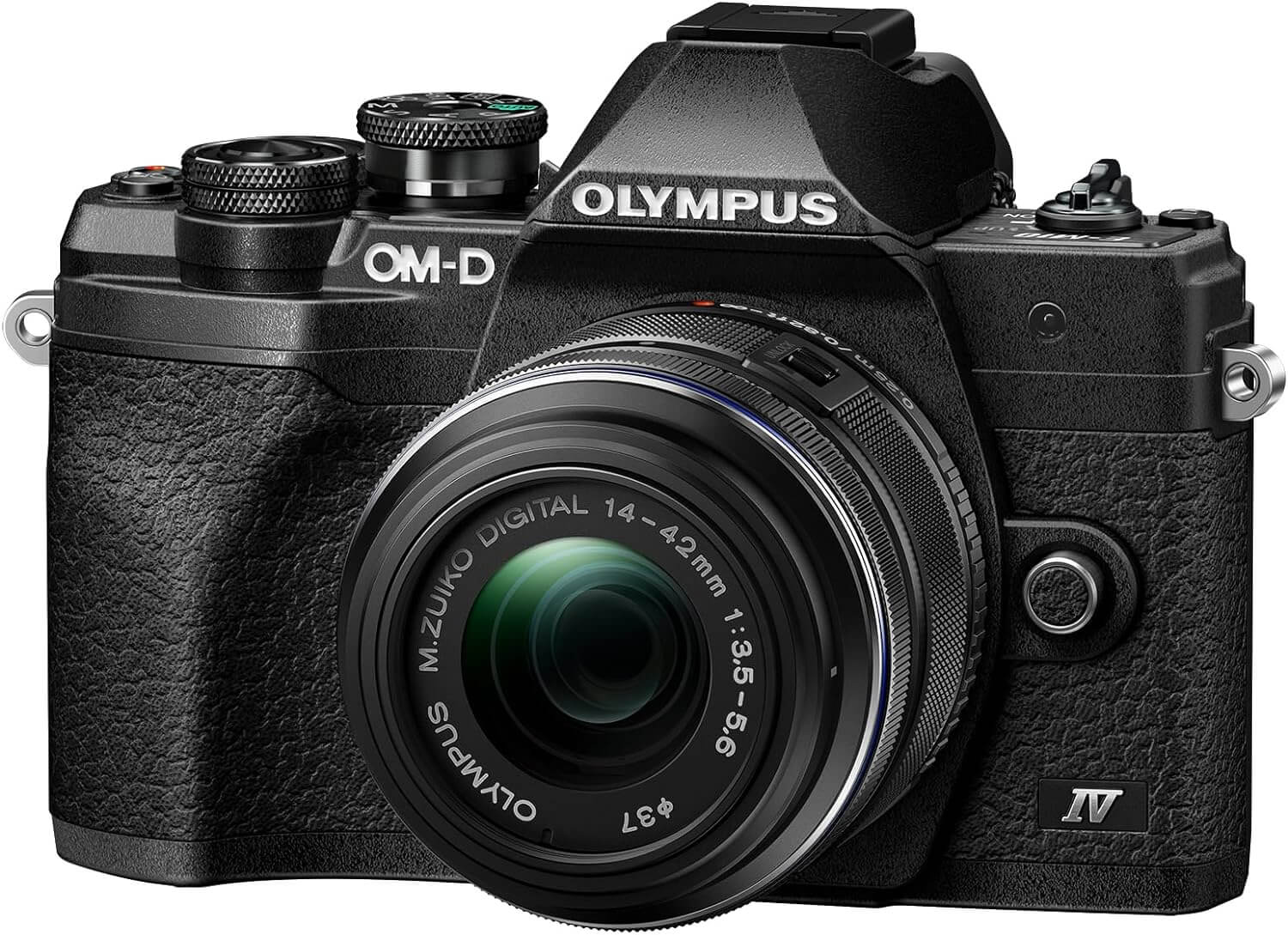
Consistent autofocus performance holds up even in challenging lighting situations. “Olympus has packed a lot into this stylish little pocketable camera. We have replaced the Mark III of this model in this guide with the Mark IV due to several worthwhile enhancements, including a better sensor, quicker focusing and generally a more refined and capable package. Olympus made much of its improved autofocus for the MK IV version of the camera, and we can safely say it delivers. The camera’s autofocus ability is up there with the best in its class and didn’t ever fail to lock on to motion at a reasonable distance. With 15FPS in burst mode, it also delivered when it came to capturing the right moments — particularly with regard to street photography and wildlife,” writes Space.
Quick burst shooting capabilities make them ideal for capturing fast-paced action. “I liked the E-M10 so much that I bought my partner one for her birthday. If that’s not putting my money where my mouth is, I don’t know what is! In addition to being one of the prettiest cameras on this list, the E-M10 Mark IV is also the smallest – making it perfect for travel and street photography, and an ideal holiday camera. And just because it’s the most affordable, doesn’t mean it skimps on features. With a guided user interface, it’s an exceptional camera for beginner and intermediate photographers eager to unlock new skills. It boasts super-sturdy in-body image stabilization, along with 4K video and a responsive touchscreen that flips down 180° – ideal for selfies and walkabout vlogging,” shares Digital Camera World.
6. Sony Alpha 1
From another big name in the world of photography, “The Sony A1 is everything that Sony says it is. It’s a technological triumph, a camera that really can do everything. Previously, cameras might offer speed, resolution, or video capability, but the A1 offers all three – and even beats dedicated sports and video cameras at their own game. It has a lot in common with the Nikon Z8 and Z9; a high-resolution sensor (50MP), 8K video (up to 30p), blistering burst speeds (30fps)… but one thing it doesn’t have in common is the price. And that remains a major obstacle, as does its appeal being limited to shooters who need everything it does, not just one or two of those things, in order to justify the price…Still, for sheer firepower on all fronts, the A1 can’t be beat. In fact, it’s so powerful that Sony practically killed two of its other cameras by making this one! The Sony A9 II is a terrific sports camera that’s eclipsed by the A1, while the Sony A7S III’s excellent 4K video pales against the A1’s 8K capture. If you want it all, and can afford it, this camera is pretty much future-proof,” says Digital Camera World.
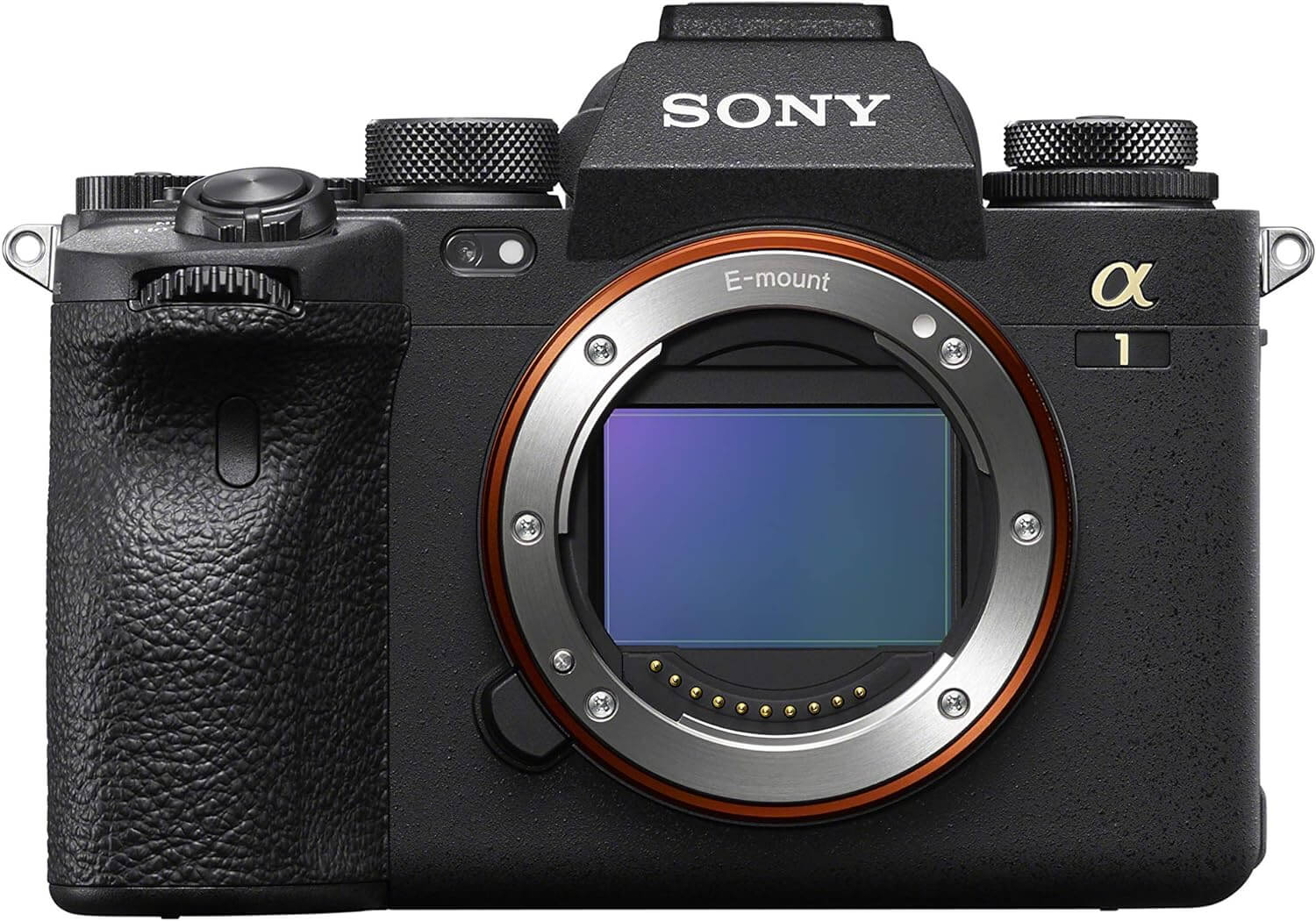
Expert reviewers are torn when making a choice between the Sony A1 and other brands, yet, the Sony still ranks among the best. “The Sony A1 has extraordinary specifications, basically on par with the Nikon Z9. It can shoot 50 megapixel images at 30 frames per second, which is out of this world. It has an amazing autofocus system, too, making for great sports and action photography – alongside the obvious landscape photography applications. Between the Sony A1 and the Nikon Z9, it was very hard to pick which one deserved to be ranked higher. A lot of it comes down to whether you prefer the large form factor of a camera with a built-in grip like the Z9, or the portability of the Sony A1,” writes Photography Life.
These cameras offer flexibility with a variety of lenses for different shooting needs. “The Sony A1 is one of the best cameras on the market, but as we mentioned in our hands-on Sony A1 review, it has a hefty price tag, to say the least, and is most likely only accessible to professional photographers or those with a very big budget. With a massive 50.1MP stills resolution, 8K 30p video, a class-leading electronic viewfinder and in-body image stabilization of 5.5 stops, you’ll be able to capture every star in the sky. Not to mention, this menu system is one of the best and easiest to navigate that we’ve seen from Sony, who are notorious for having confusing menus — it seems they’ve listened to their customers. The impressive specs are ideal for astro work — the camera’s extended ISO range of up to 102,400 can help to produce some amazing astrophotography, and its 15 stops of dynamic range ensure that even the tiniest celestial specks can be captured. It also handles noise very well thanks to its stacked CMOS sensor,” shares Space.
7. Canon EOS R5
Last but not least on our list is the Canon. “The Canon EOS R5 has a 45 megapixel sensor and can shoot a whopping 20 FPS. It has an excellent autofocus system, and like the three cameras above, it can also shoot 8K video. Canon found a way to push a ton of data through the EOS R5’s imaging pipeline, and it makes this camera excellent for both action photography and landscapes. As you would expect, all this comes at a high price,” says Photography Life.
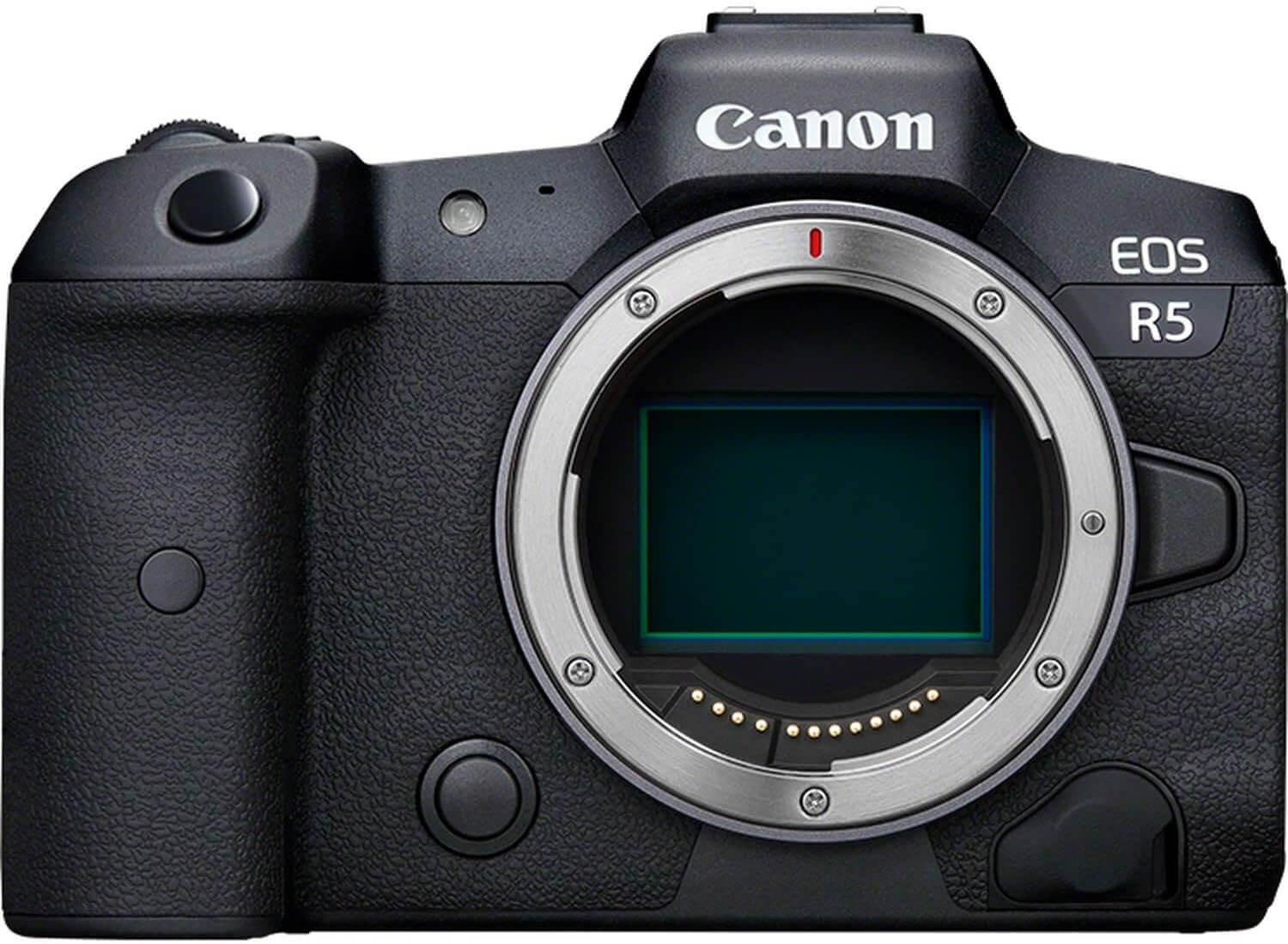
With no optical viewfinder, photographers can enjoy real-time digital previews for accurate composition. “The EOS R5 is Canon’s best overall camera for stills photography, out-performing and out-featuring pretty much every model its released to date. Pro sports and wildlife specialists may find reasons to prefer the 1Dx III – such as its larger battery, optical viewfinder being preferable in some situations and the bullet-proof build – but for everyone else, the R5 is hard to beat,” shares Pop Sci.
You might also be interested in:
Sources:
- Tech Radar
- Photography Life
- Digital Camera World
- Space
- Camera Labs
- Epidemic Sound
- Wired
- Shotkit
- Toms Guide
- Amateur Photographer
Note: This article was not paid for nor sponsored. StudyFinds is not connected to nor partnered with any of the brands mentioned and receives no compensation for its recommendations. This article may contain affiliate links in which we receive a commission if you make a purchase.
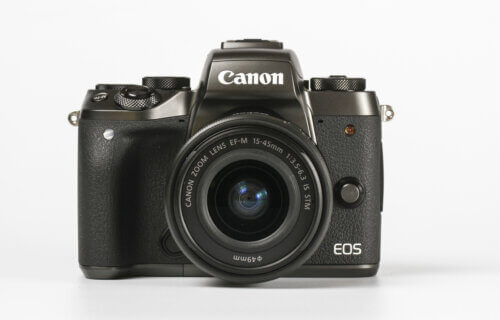
I still use my old 6D and a dozen L lenses…buying new cameras does not justify the return on investment…they are digital junks….no client cares about 61MP..oh my iphone is 40MP…nicee..hahahah..buy strobes instead…
Ball up on the alpha 7r v ho.
I recently purchased the R6 myself. A tremendous camera indeed. The 20 megapixel count isn’t noticeable at all in terms of lower quality images, the auto focus is indeed widely accurate, and it’s interface is a charm. Very happy with it!
I’m sorry, but are these the opinions of “photography experts” or paid “gear shills”, which “Study Finds” then regurgitates into more click-baitey content? I see no original conclusions here.
“Mirrorless cameras are reported to take extremely sharp images, possibly sharper than that of DSLRs” this proves the opinion piece useless.
Joe your probably close to the mark on some of these cams. These companies do make other models that can produce quality pics yourreaders might want to considerthem. I been at this 📸 game over 63 years. I’ve seen it all and just about owned it all, however my opinion is just that, an opinion. I have very capable mirrorless Nikons Z 7 II and a fc but also retained two wonderful DLSRs, d750 and d500 which I won’t part with. My SLRs and DLSRs have become an extention of my hand and I work my camera adjustments quickly. Bottom line here is I live in both worlds and it’s ok. Besides there is a mystic about the color reproduction and overall look between DSLRs vs Mirrorless. Yes I’ll say Mirrorless wins but the pics look too sterile. Maybe I just have to get used to it. The amount of processing going on in Mirrorless cams is far greater than what goes on in DLSRs. One last thing you should always remember, ” the photographer makes the photograph not the camera. Look at the famous post WWII photograph of the Sailor bending over the girl in a kiss embrace. That was taken by a press camera over 75 years ago. Nobody remembers the camera but they sure remember the photograph.
I’ve been shooter on and off since I received my first camera for christmas when I was 15, I’m now 78. equipment sure has come a very long way in between those years. I am currently shooting with the panasonic S5.
I have to say I totally concur with your choices. competion between manufacturers is severe, we are guaranteed a great selection of outstanding cameras thats for sure. …. thx for your efforts in putting together this article. ……. zen billings, canada
The Fuji X-T4 has been replaced by the X-T5 and the X-H2. Neither of those cameras is mentioned in this list.
Not to mention, not a single word about film simulation or the fantastic colors out of the Fuji cameras
I currently shoot with a Nikon D850 & D500. I’ve struggled with moving to mirrorless at 70 years old. But I’m taking the plunge and going with the Nikon Z9 into the mirrorless world.